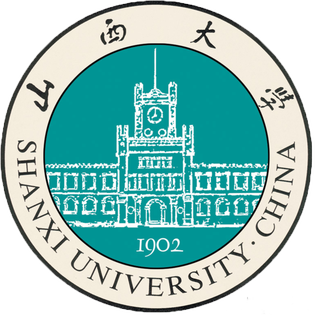Shanxi University is located in Taiyuan, which is the capital of Shanxi Province and boasts a history of 2,500 years. Its profound cultural heritage can be dated back to Sanli College in the Ming Dynasty and Jinyang College and Linde College in the Qing Dynasty. Shanxi University’s predecessor was the Shanxi Grand School founded in 1902. Shanxi Grand School promoted the integration of Chinese cultures with Western sciences, while also paying equal attention to arts and natural sciences. Great flexibility was required to manage the task of running a college and promoting advanced educational ideas. The school was one of the most important cradles of Chinese higher education and a crucial institution for spreading culture, science, and education in Shanxi Province for over a hundred years. Inheriting the glorious tradition of “Knowing the East and West; seeking goodness and truth; promoting the virtuous and the talented; being self-reliant and serving the country”. Promoting and abiding by, the excellent school motto of “being industrious, strict, honest and creative”, Shanxi University has cultivated excellent talents for the country and society, and successfully made a sterling contribution to educate people and invigorate our industry in modern China. The campus, covering a geographic area of 2,066 mu and a floor space of 987,000 square meters, has been awarded the titles of Green and Gardenlike University by the provincial government. With a collection of 3.02 million books and 603 GB e-books in its library, Shanxi University provides teaching and research instruments with a total value of more than 200 million yuan RMB. The campus consists of two parts: the northern part is characterized by elegant traditional designs, while southern one is proud of many stylish modern buildings. Towering trees form canopies over the avenues and beautiful floral displays decorate all buildings, the whole campus is full of a deeply humanistic and serene atmosphere suitable for both studying and living. Shanxi University hosts over-all specialties and has built up a proud reputation for its profound research results. Eleven academic fields cover 69 majors for undergraduates and 18 majors for the double bachelor’s degree. At present, it has 48 doctorate programs (6 first grade disciplines) and nine centers for post-doctoral studies, 137 general Masters of Arts and Sciences programs (19 first grade disciplines), and 16 specialized M.A./ M.S. programs. At present, Shanxi University has 1,982 full-time lecturers, among whom 1,058 have obtained advanced academic titles. Also the university has academicians from the Chinese Academy of Sciences, national outstanding talents on expertise, “Cheung Kong Scholars Program”. Special appointed professors and visiting professors, state-level middle-aged experts with the title of “Prominent contributors”, winners of the national projects of the science foundation for eminent youths, state-level model teachers, leading teachers approved by the Ministry of Education, and nearly 100 experts with a special state-sponsored allowance. Moreover, the university hosts state-level innovation and research groups, the state-level teaching team, and the ministerial innovation group. Of the courses for the students, three were selected as state-level fine courses. Seven textbooks compiled by the academic staff from Shanxi University were selected as state-level materials of the "Eleventh Five-Year" plan. Six doctors were awarded the National Excellent Doctoral Dissertation Award or won the honor of being nominated. At present, 17,114 undergraduate and 6,643 graduates are studying in this university. In recent years, the students won 13 first prizes, including the National Mathematical Contest in Modeling, "Challenge Cup" Competition of Extracurricular Science and Technology, Electronic Design Competition, Advertising and Art Contest. Shanxi University has increasingly enlarged its international exchanges. It has established intercollegiate relationship with over 50 universities and institutions from the United States, Japan, South Korea, the United Kingdom, France, Germany, Canada and other countries. In addition, Shanxi University collaborates with the Yerevan State Linguistic University after V. "Briusov" of Armenia and the Pfeiffer University of the United States respectively to set up two Confucius Institutes. The establishments of these two Confucius Institutes have provided more opportunities for both Chinese students to join in tertiary education abroad, and international students to study in China. While the glorious heritage of the last century has been remarkable, today's Shanxi University is facing up to new opportunities and challenges. In order to evolve into a local exemplary research-oriented university, Shanxi University will adhere to principles to blossom in the fierce competitive atmosphere by improving the educational quality, developing via its distinct characteristics, showing vitality by carrying out reform, and reaching maximum efficiency through dedication to an open minded policy.
Show less
_1.png?auto=format,enhance,redeye,compress,true)
_2.png?auto=format,enhance,redeye,compress,true)
_3.png?auto=format,enhance,redeye,compress,true)
_4.png?auto=format,enhance,redeye,compress,true)
_5.png?auto=format,enhance,redeye,compress,true)
_6.png?auto=format,enhance,redeye,compress,true)
_7.png?auto=format,enhance,redeye,compress,true)

.png)
.png)
.png)






